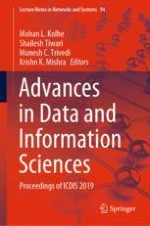2020 | OriginalPaper | Chapter
Predictive Model Prototype for the Diagnosis of Breast Cancer Using Big Data Technology
Authors : Ankita Sinha, Bhaswati Sahoo, Siddharth Swarup Rautaray, Manjusha Pandey
Published in: Advances in Data and Information Sciences
Publisher: Springer Singapore
Activate our intelligent search to find suitable subject content or patents.
Select sections of text to find matching patents with Artificial Intelligence. powered by
Select sections of text to find additional relevant content using AI-assisted search. powered by
